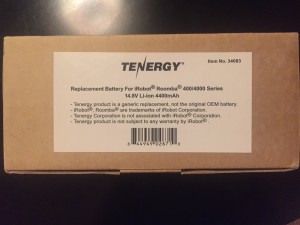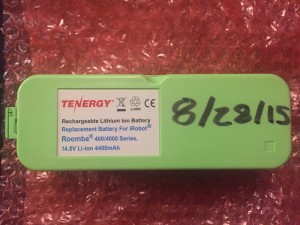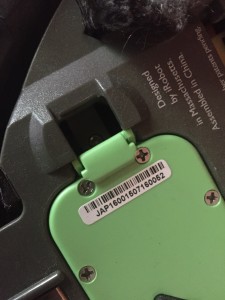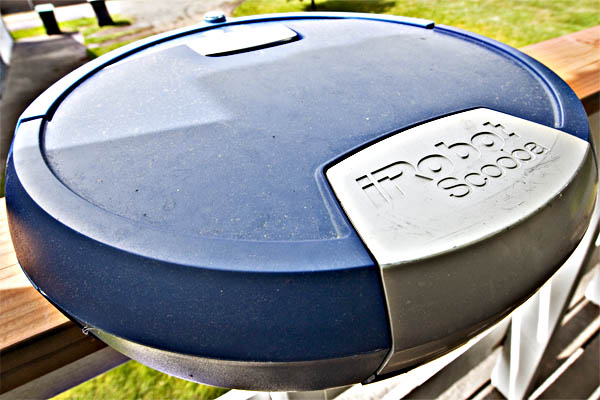Several people over the years have found my blog posting on why not to use Lithium battery packs in Roombas. Some people have taken the information at face value, others have argued with me in the comments and tried to claim my views on the subject are not valid.
Some of the folks over at Tenergy also noticed my article and decided to send me a battery to prove to me they have resolved the issues I was citing. Here is a link to the battery in question:
http://www.all-battery.com/lithium_roomba_400battery-34083.aspx
In the interest of full disclosure, in consideration for the battery, they only asked for my honest review along with a link back to the product to allow people to find it.
At this point in time, I have been using the battery lightly for about a month. I use my roombas somewhat sporadically. This may actually shorten their life due to lack of cycles and a poor factory charger circuit. So far, this pack seems to be holding up just fine. One thing I should point out that is different about this pack from the other lithium packs I used in the past… When the other packs ran low, the Roomba light would start to glow orange and then suddenly the roomba would die in place. In other words, it never had enough charge left to bring itself back to the base. The batteries low volt protection cutout would kick in and save the cells from damage.
This pack appears to work like a typical NiMH pack. The light eventually goes red like it should and the robot stops moving but the power remains on.
As far as runtime, I’m using the pack on hard surfaces. I haven’t paid close attention but it seems to go for a couple of hours. One day I will time it and update the review, for now though, I wanted to post my initial thoughts.
Similarly, I will obviously need to reserve my judgement on longevity until the pack starts to noticeably deteriorate. That could be months or could take over a year.
So far, if I had to pick one complaint about the pack, I would say that one of the retainer clips is unable to snap into place. This is a pretty minor issue that I could probably fix with some sandpaper or a knife but I shouldn’t have to. I’ve cleaned the area under the battery and pushed on it pretty hard but it just won’t snap in there for some reason.
For now, I will say that the price is currently $68.99. This is marked down from the typical $90. The Tenergy packs for the 400 are $25 on Amazon. So what do you get for 3x the price? I’m not sure yet. Only time will really tell there. The pack is certainly lighter than a NiMH pack so it’s putting a little less wear on the robot. It seems to last similarly to some of the best NiMH packs I’ve had. It’s not exactly an all-day battery pack however. In the coming months, I’ll try to monitor the health of this pack a bit more closely and possibly more scientifically.
My first lithium pack for the Roomba was $150. When it prematurely cooked, I was not pleased. At $69, if I got a year out of this one, I probably wouldn’t complain too much but then again, if it only lasts a year, why pay any premium on it at all? Let’s hope that I’m able to favorably speak of this pack for years to come as “the best Roomba battery I’ve ever had”.






